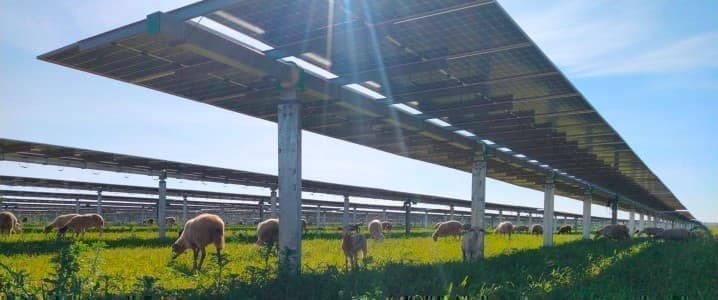The U.S. solar sector enjoyed a banner year in 2023, with installed capacity increasing 55% Y/Y to a record 33 GW, mainly driven by robust growth by residential solar and high energy prices. Hardly surprisingly, the Sunshine State, Florida, continues to dominate state solar rankings, installing 2.5GW of new capacity in the first half of the year, more than 50% higher than second-ranked California.
"The United States is now a dominant player in the global clean energy economy, and states like Florida, Texas, Ohio and Georgia are at the forefront of this job growth and economic prosperity. The solar and storage industry is delivering abundant clean energy that is generating tens of billions of dollars of private investment, and this is just the tip of the iceberg," Abigail Ross Hopper, president and CEO of the Solar Energy Industries Association, declared.
But solar’s popularity is not unique to the U.S. Earlier in the year, the International Energy Association reported that the amount of capital investment flowing into the global solar sector was on track to overtake the amount of investment going into oil production for the first time ever. According to the IEA, global solar investments are expected to attract over $1 billion a day in 2023 with over $1.7 trillion slated to flow to clean energy compared to $1.1 trillion for oil and gas.
Unfortunately for solar bulls, that blistering pace is unlikely to be repeated in the coming year. According to a report by the Solar Energy Industries Association (SEIA) and Wood Mackenzie, the U.S. solar sector is projected to see a more modest 10% growth in installed capacity in 2024, hampered by high-interest rates and the net metering policy in California.
Both are potentially powerful bearish catalysts.
High-Interest Rates Killing Clean Energy
U.S. interest rates have increased sharply over the past few years, going from about half a percentage point during the pandemic to 4.3% currently thanks to withdrawal of monetary stimulus by the Fed in a bid to combat inflation. But, at least, it has worked: Underlying inflation eased again in October, with the Multivariate Core Trend (MCT) inflation clocking in at 2.6% in October, from 2.88% recorded in September. Consumer prices increased 3.2% last month, way lower than 9.1% year-over-year inflation recorded in June 2022.
Unfortunately, renewable energy investments tend to be highly sensitive and high interest rates tend to hurt them far worse than any other part of the energy sector. That’s the case because clean energy projects require developers to borrow large amounts of capital upfront to build projects. But that’s only part of the picture. The cost of electricity generated from renewable energy is impacted far more by rising rates compared with electricity generated from fossil fuels: the International Energy Agency has found that a 5% rise in interest rates increases the levelized cost of electricity from wind and solar by a full 33% but only marginally for natural gas plants. That’s very bad news for clean energy considering that the current inflation rate still is quite a bit above the central bank’s 2% target, and it has signaled a willingness to trim its balance sheet even more.
In fact, a hawkish Fed is the biggest reason why U.S. solar stocks are doing much worse compared to their oil and gas brethren despite record installations: the Invesco Solar ETF (NYSEARCA:TAN) has cratered -42.1% over the past 12 months compared to a much tamer -3.7% loss by the Energy Select Sector SPDR Fund (NYSEARCA:XLE). “There’s a dark cloud hanging over green stocks,” Martin Frandsen, portfolio manager at Principal Asset Management, has told the Financial Times.
Meanwhile, California’s new solar policy could prove problematic for future installations. Dubbed Net Energy Metering 3.0, the California solar energy policy revision decreases the value of solar energy credits by a whopping 75% in a bid to encourage customers to purchase solar battery storage with their solar system. In essence, the California Public Utilities Commission (CPUC) wants the state’s residents to store more of their excess solar energy instead of sending it to the grid. The new policy has come under heavy criticism from both residents and solar equipment manufacturers who say it discourages the adoption of solar and makes it less affordable.
Not everybody, however, agrees with this bearish view. EnergySage has argued that solar shoppers in California are still seeing very favorable economics because:
- All three of the investor-owned utilities in California have raised their electricity rates significantly, with San Diego Gas & Electric increasing their rates by 25% over the rates in the NEM 3.0 filing. This translates directly to shorter payback periods.
- Solar prices in California have dropped more than 5% from their peak in April 2023. Paying less for your solar installations means faster payback periods.
Whether NEM 3.0 actually translates into better solar economics for Californians in the long run remains to be seen.
By Alex Kimani for Oilprice.com
More Top Reads From Oilprice.com:
- EU to Allow Members to Ban Russian Pipeline Gas
- China’s Oil Demand Growth Is Set for a Significant Slowdown in 2024
- Saudi Arabia May Have Set the Price of Its Oil Too High


















